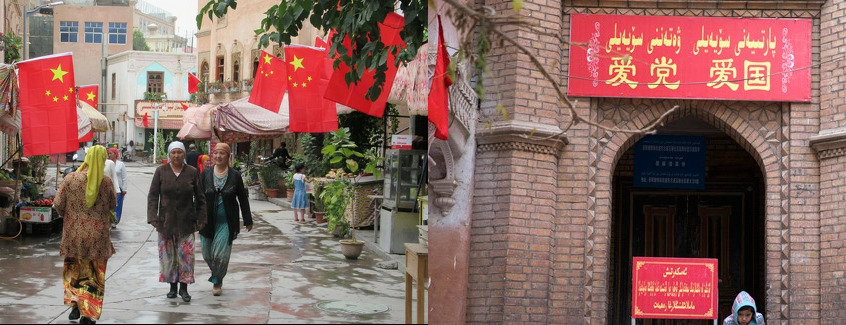Complete Sinicization of Xinjiang under the Xi Jinping Era
Share

The Communist Party of China’s (CPC) suppressive tactics in the Xinjiang province seem to see no end even after it has manged to quite literally Sinicize the region through a range of heinous measures along with the much-debated re-education camps. The CPC’s strategy of Sinicizing has largely remained multifaceted with specific emphasis on systematically eroding the cultural influence of indigenous Uyghurs in the region. Through detrimental modes such as economic and political measures, the CPC has by and large remained successful in its sinister campaigns. However, even though these strategies have, to a major extent, achieved their objectives, the CPC seems to diversifying its methods in order to accelerate their complete Sinicization objectives.
The CPC has implemented severe measures to control religious practices, including the demolition of mosques and religious sites while also prohibiting the teaching of religion to minors. Furthermore, Surveillance systems have been installed at religious sites with leaders closely being monitored and detained. Moreover, the vast energy and strategic resources that the Xinjiang region sits upon has had considerable impact upon how the Chinese perceive the Uyghur minority in the country. Xinjiang is undoubtedly strategically important for China due to its vast energy resources and location along the Silk Road Economic Belt. Thus, discrimination against Uyghurs serves as a means of asserting political control and quelling any aspirations for autonomy among the youth that seeks to envision a peaceful future. All of the CPC’s strategies are therefore understood to be catering towards one primary objective- integrating the region into the national and global economy on terms that specifically benefit not only the Han Chinese interests but also of the supreme Party.
CPC’s method to suppression in Xinjiang
Above and over strategies supressing religious practices, the Chinese administration is also aggressively promoting the Mandarin language over the Uighur language in its attempts to Sinicize the population of the province. Educational policies have been altered to prioritize Mandarin as the medium of communication and teaching to the extent of diminishing the use of Uighur dialects altogether. Through these measures the CPC continuously aims to weaken the transmission of Uighur cultural and historical knowledge to future generations, imbibing a more homogenized Chinese identity.
The strategies to Sinicize have also undertaken demographic engineering techniques such as encouraging the migration of Han Chinese populations into Xinjiang through economic incentives and development projects. This demographic shift enforced by the CPC aims to alter the ethnic composition of the region thereby making Uyghurs a minority in their own homeland.
The establishment of a subtle surveillance state in Xinjiang is another key component in facilitating the complete Sinicization of the Xinjiang province. The province is one of the most heavily monitored areas in the world, with extensive use of cameras, facial recognition technology, and data collection systems. This surveillance apparatus not only controls the daily lives of Uyghurs but also suppresses dissent and enforces cultural conformity. The so-called re-education camps, where up to a million Uyghurs and other Muslim minorities have been detained, are central to this strategy of irradiating any known history and understanding of the prevailing culture. In these camps, detainees are understood to have been subjected to political indoctrination where they are forced to renounce their religious and cultural beliefs all the while preaching Party ideology.
Chinese interest in supressing Uyghur’s cultural relevance
Beijing’s approach towards Xinjiang has for long been a contentious issue leading to global outrage against suppressive tactics that the CPC has been deploying. Numerous reports and accusations of cultural suppression have verified the ill nature of Beijing’s modes of Sinicization accusing the Party of undermining Uyghur culture, identity, and religion. These measures range from restrictions on religious practices to the erosion of their language, fundamentally altering the cultural fabric of the region. Furthermore the ‘development narrative’ pushed by the Chinese administration in the province often frames Uyghur’s as backward, while also promoting assimilation into the dominant Han Chinese culture as the only path to modernization. This not only undermines the unique cultural heritage of the people of Xinjiang but also fuels resentment and a sense of disenfranchisement among the people. Thus, it is important that relevant stakeholder come together to prevent such heinous tactics that the CPC seems to be deploying in its attempts to completely irradicate the cultural relevance of the people residing in the region. For if not, Beijing may very well end the cultural, social, political and even an economic presence of Uyghur’s in China.







